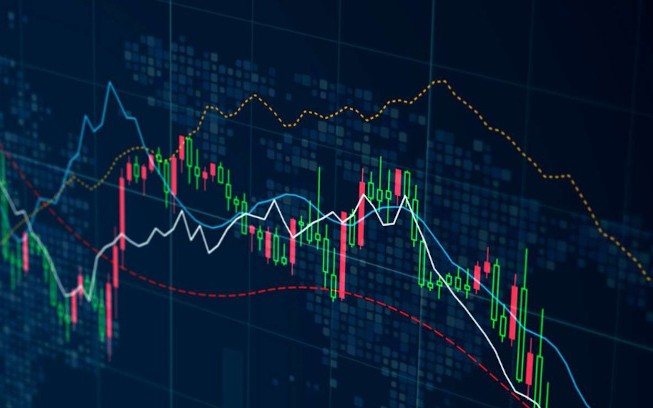
Understanding Forex trading charts is essential for any trader looking to navigate the complex world of currency trading. The right chart can provide valuable insights into market trends and price movements. To begin your journey into Forex charts, visit forex trading charts https://forex-exregister.com/.
What Are Forex Trading Charts?
Forex trading charts are graphical representations of currency pair prices over a specific period. These charts allow traders to visualize and interpret market trends, price action, and potential trading opportunities. By understanding how to read and analyze these charts, traders can make informed decisions regarding their trades.
Types of Forex Trading Charts
There are several types of Forex trading charts, each with its own advantages and disadvantages. The most common types include:
1. Line Charts
Line charts are the simplest form of Forex charts. They connect the closing prices of a currency pair over a specified time frame. This type of chart provides a clear view of the overall trend but lacks detailed information about price movements within the selected period.
2. Bar Charts
Bar charts display more information than line charts. Each bar represents the open, high, low, and close (OHLC) prices for a specific period. The vertical line shows the high and low prices, while the horizontal lines on the left and right indicate the opening and closing prices, respectively. Bar charts offer a more comprehensive view of price action and trends.
3. Candlestick Charts
Candlestick charts are a favorite among traders due to their visual appeal and the amount of information they convey. Each “candlestick” represents a specific time period and displays the open, high, low, and close prices. The body of the candlestick is colored according to the direction of the price movement: green (or white) for upward movements and red (or black) for downward movements. Candlestick patterns can help traders identify potential reversal points and market sentiment.
Reading Forex Trading Charts
Reading Forex trading charts requires an understanding of various chart components and indicators. Here are key elements to consider:
Price Action
Price action refers to the movement of a currency pair’s price over time. Understanding price action is crucial for effective trading, as it allows traders to identify trends, support and resistance levels, and potential entry and exit points.

Trends
Trends indicate the general direction in which the market is moving. There are three types of trends: uptrend (higher highs and higher lows), downtrend (lower highs and lower lows), and sideways trend (prices moving within a range). Identifying the prevailing trend is essential for making informed trading decisions.
Support and Resistance Levels
Support and resistance levels are critical points on a chart where the price tends to reverse or stall. Support is typically a price level where buying interest is strong enough to overcome selling pressure, while resistance is where selling interest exceeds buying pressure. These levels can help traders identify potential entry and exit points.
Technical Indicators
Technical indicators are mathematical calculations based on price and volume data, designed to forecast future price movements. Some commonly used indicators include:
1. Moving Averages
Moving averages smooth out price data over a specified period, helping to identify the prevailing trend. The two most common types are the Simple Moving Average (SMA) and the Exponential Moving Average (EMA).
2. Relative Strength Index (RSI)
RSI measures the speed and change of price movements, providing insights into overbought or oversold conditions. The RSI ranges from 0 to 100, with values above 70 indicating overbought conditions and below 30 indicating oversold conditions.
3. Bollinger Bands
Bollinger Bands consist of a middle line (SMA) and two outer bands that represent volatility. When the price approaches the upper band, it suggests overbought conditions, while reaching the lower band indicates oversold conditions.
Choosing the Right Time Frame
Time frames play a crucial role in trading decisions. Different traders may prefer different time frames, such as:
1. Scalping
Scalpers typically use very short time frames (1-minute to 5-minute charts) to make quick trades based on small price movements.

2. Day Trading
Day traders usually operate on 15-minute to hourly charts, making trades throughout the day and closing all positions before the market closes.
3. Swing Trading
Swing traders hold positions for several days or weeks, using 4-hour or daily charts to identify longer-term trends.
Developing a Trading Strategy
To succeed in Forex trading, it’s essential to have a well-defined trading strategy that incorporates chart analysis. Here are steps to develop an effective strategy:
1. Set Clear Goals
Define your trading objectives, including profit targets and risk tolerance. Having clear goals helps create a focused plan.
2. Analyze Charts
Utilize various chart types and indicators to analyze price movements and identify potential trading opportunities based on your strategy.
3. Practice Risk Management
Implement risk management techniques, such as setting stop-loss and take-profit orders, to minimize potential losses and protect your capital.
4. Keep a Trading Journal
Maintaining a trading journal can help you track your trades, analyze your performance, and improve your decision-making process over time.
Conclusion
Understanding and effectively utilizing Forex trading charts is a fundamental aspect of successful trading. By mastering the different types of charts, learning to read them, and incorporating technical indicators into your analysis, you can significantly enhance your trading skills and decision-making capabilities. As you continue to develop your trading strategy, remember to remain disciplined, patient, and committed to continuous learning in the ever-evolving Forex market.
